
Out of control spending may be okay for the federal government (Let’s be frank 20+ trillion of debt seems pretty out of control to most of us) but as a store owner or manager out of control expenses will bury your company. I am sure that you are looking carefully at where you spend your cash, reviewing controllable reports and monthly expenses. What you may not be considering is how operating a store without inventory controls in place can be negatively impacting the profits of your store.
When I talk about inventory controls I am not simply referring to activities on inventory night, I am talking about everything the store does all year to control merchandise. For example, the store I work for receives their pallets of freight several times a week. Included in these pallets are sealed plastic shipping boxes that hold individual pieces of merchandise. Some of these boxes have different colored seals and colored seals are indicators that the merchandise inside is high value/high theft goods requiring strict controls. The merchandise in these boxes requires security devices or immediate lock-up. When I was a Loss Prevention Manager for another company we had a lock-up cage we staged at the trailer receiving door. As specific high-risk merchandise came off of the trailer that product immediately went into the cage. That merchandise had to get to its department following a very specific path and if I observed any deviation from that path I was investigating the issue. The store where my daughter works requires all jewelry shipments be taken immediately to the jewelry counter, counted against the invoice and stocked. Jewelry is not allowed to sit out until it is convenient to secure it. Having a detailed plan for identifying high-risk products, verifying counts against invoices right away and immediately securing it are smart steps in preventing inventory shortage from getting out of control.
Electronic article surveillance (EAS) systems are another key piece of a sound inventory control strategy. When I mentioned securing products above it does not necessarily mean that merchandise has to go into a lock-up case. Most merchandise can be protected against theft with EAS labels, hard tags, wraps and other protective devices (for example Sensormatic has a product called Flexible Safers that can hold items and still give EAS protection). There are some things that a display case is appropriate to display merchandise in such as high-end jewelry. By the same token, there are EAS products suitable for costume and less valuable jewelry. Inventory control of such pieces of merchandise means tagging these items by a team of trusted employees before they are on the sales floor and accessible by other employees or shoppers. An EAS system also includes the installation of towers at all points of entrance and exit. A common error on the part of many retailers is the failure to place towers near vendor doors and employee-only entry doors. Failing to protect these doorways is a misstep in recognizing the reality of employee theft and the impact it has on store profitability.
Inventory control also takes place in in-store training programs. Teaching employees how the customer service they provide helps prevent shoplifting plays a part in inventory control. Training front end supervisors and cashiers how to properly handle EAS alarm activations determines how much merchandise you may or may not recover from potential thieves. Even the proper training of specialists who show merchandise from lock-up showcases impacts the potential for a crook to steal. How many pieces of jewelry should be out of a case to show a customer at any time? One, two, or three items? You have to teach your team what you expect and how someone may try to trick them while they are showing merchandise.
Inventory control is a year-round effort. It encompasses more than locking up merchandise or preparing for an annual inventory. Inventory control requires an in-depth look at where losses can take place, how they occur and who may be causing the losses. Once you do that you can implement solutions to the problem by creating a comprehensive shortage prevention strategy. Do that and you keep from losing control over your store profit line.
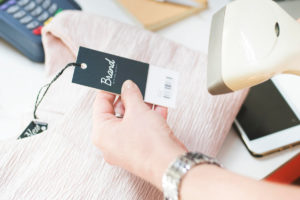 Wow, Christmas is over and Retailers are starting to dig out from the carnage. Unfortunately, some of the carnage is all the merchandise that shoplifters have liberated from your store. I believe that theft is actually the oldest vice around. Even older than “the oldest profession”. As long are there are two things on this earth 1-people and 2-stuff, there will be theft. Well, neither is going away anytime soon. So what do we do?
Wow, Christmas is over and Retailers are starting to dig out from the carnage. Unfortunately, some of the carnage is all the merchandise that shoplifters have liberated from your store. I believe that theft is actually the oldest vice around. Even older than “the oldest profession”. As long are there are two things on this earth 1-people and 2-stuff, there will be theft. Well, neither is going away anytime soon. So what do we do?  It is January and you are ready to get started on your new year. What does the start of a New Year look like for your business? Are you still trying to move out seasonal and clearance merchandise? Are you preparing to trim back payroll by releasing seasonal employees? Maybe you are already thinking about inventory and what you will need to do to prepare for that day. There are all sorts of ways retail owners and managers start the New Year but I would suggest that before you look forward you take time to look back on the previous year.
It is January and you are ready to get started on your new year. What does the start of a New Year look like for your business? Are you still trying to move out seasonal and clearance merchandise? Are you preparing to trim back payroll by releasing seasonal employees? Maybe you are already thinking about inventory and what you will need to do to prepare for that day. There are all sorts of ways retail owners and managers start the New Year but I would suggest that before you look forward you take time to look back on the previous year.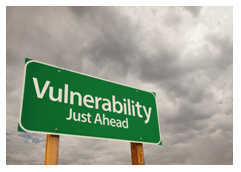 Have you ever noticed how we all anticipate a New Year will bring new and exciting things into our lives (or businesses) but after the first month we often realize that nothing is new or improved or better? In fact, we may be disappointed as the year progresses that problems we hoped would be resolved (read, “magically disappear”) are still there. We make resolutions at the beginning of the year that are meant to help “improve” or “fix” something we know is an opportunity but then we slide back into our routines and those “problems” don’t get any better.
Have you ever noticed how we all anticipate a New Year will bring new and exciting things into our lives (or businesses) but after the first month we often realize that nothing is new or improved or better? In fact, we may be disappointed as the year progresses that problems we hoped would be resolved (read, “magically disappear”) are still there. We make resolutions at the beginning of the year that are meant to help “improve” or “fix” something we know is an opportunity but then we slide back into our routines and those “problems” don’t get any better. It’s 2019 and time to make some New Year’s resolutions! We all know how easy a resolution can be to make but they are hard to keep. We also know that it is just as easy to break a resolution but are there resolutions a store owner can make that would benefit the store AND benefit society? I think one resolution that would be mutually beneficial for both would be the implementation of environment-friendly policies and procedures. We are talking about sensible measures that would appeal to anyone on either side of the political spectrum. Right now there is a big push for the elimination of plastic shopping bags. There are also those opposed to going back to paper bags. What could the solution be? Try encouraging the use of recyclable, reusable shopping bags for your customers. You make those opposed to one-time use bags happy and you save money on the need to regularly purchase more shopping bags (which can be a rather pricey supply on your monthly expense report). To implement this type of change you would want to have reusable bags ready for your customers and you might even give them away for the first few weeks you start the program. After that, you might give customers a small discount to customers who bring their own bags, say 1% on every transaction.
It’s 2019 and time to make some New Year’s resolutions! We all know how easy a resolution can be to make but they are hard to keep. We also know that it is just as easy to break a resolution but are there resolutions a store owner can make that would benefit the store AND benefit society? I think one resolution that would be mutually beneficial for both would be the implementation of environment-friendly policies and procedures. We are talking about sensible measures that would appeal to anyone on either side of the political spectrum. Right now there is a big push for the elimination of plastic shopping bags. There are also those opposed to going back to paper bags. What could the solution be? Try encouraging the use of recyclable, reusable shopping bags for your customers. You make those opposed to one-time use bags happy and you save money on the need to regularly purchase more shopping bags (which can be a rather pricey supply on your monthly expense report). To implement this type of change you would want to have reusable bags ready for your customers and you might even give them away for the first few weeks you start the program. After that, you might give customers a small discount to customers who bring their own bags, say 1% on every transaction. For a loss prevention officer, the holiday season is a hard time to be jolly when the busiest shopping season of the year brings with it its shoplifters, crime, and theft.
For a loss prevention officer, the holiday season is a hard time to be jolly when the busiest shopping season of the year brings with it its shoplifters, crime, and theft. For the retail industry and small businesses in general, the holiday season has started, and for them, this season can be a financial boost for their business.
For the retail industry and small businesses in general, the holiday season has started, and for them, this season can be a financial boost for their business.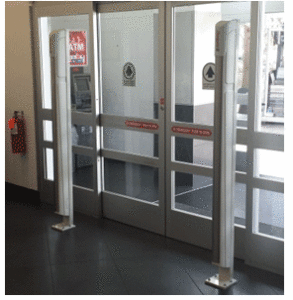 One of the most prevalent crimes in the United States is shoplifting.
One of the most prevalent crimes in the United States is shoplifting.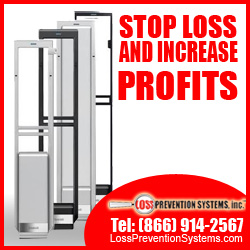 NO! not yet. Before we begin patting ourselves on the back you must remember that your Sensormatic System is only part of your shoplifting solution. Your Sensormatic System will protect your merchandise however, many shoplifters are determined and will try to steal anyway. The Sensormatic System itself is a deterrent. Its mere presence will dissuade many shoplifters.
NO! not yet. Before we begin patting ourselves on the back you must remember that your Sensormatic System is only part of your shoplifting solution. Your Sensormatic System will protect your merchandise however, many shoplifters are determined and will try to steal anyway. The Sensormatic System itself is a deterrent. Its mere presence will dissuade many shoplifters.
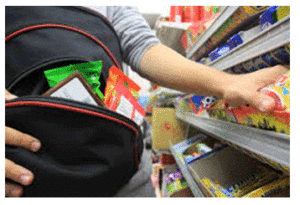 I was once asked why I kept toys on my desk in my Loss Prevention office. I had two reasons, the first was they were collectible superhero figurines (The Tick to be precise) and the other was to keep children entertained. It is a sad fact in Retail Loss Prevention but there are children who shoplift, there are parents who shoplift and there are parents who use their children to help shoplift. As a Loss Prevention professional, it is not hard to handle an adult who steals. There may be anger, tears, and pleading but these are adults and they made a choice to steal so there should be consequences. What is not so easy to cope with is the child who has to sit in the office while the parent is being processed and does not understand what is taking place. There were many instances when I had to try to keep these young ones entertained as mom or dad were answering questions about the crime, providing personal information or trying to contact a family member or friend who would be willing to pick up the child. Add to the mix a parent who is throwing a conniption fit or making the scenario worse by bawling and wailing in front of the child begging you to let them go “Just this one time and it won’t ever happen again, I promise.” It becomes quite annoying. It also upsets the child who becomes a prop for the parent. The toys were my prop to entertain the children in a pinch.
I was once asked why I kept toys on my desk in my Loss Prevention office. I had two reasons, the first was they were collectible superhero figurines (The Tick to be precise) and the other was to keep children entertained. It is a sad fact in Retail Loss Prevention but there are children who shoplift, there are parents who shoplift and there are parents who use their children to help shoplift. As a Loss Prevention professional, it is not hard to handle an adult who steals. There may be anger, tears, and pleading but these are adults and they made a choice to steal so there should be consequences. What is not so easy to cope with is the child who has to sit in the office while the parent is being processed and does not understand what is taking place. There were many instances when I had to try to keep these young ones entertained as mom or dad were answering questions about the crime, providing personal information or trying to contact a family member or friend who would be willing to pick up the child. Add to the mix a parent who is throwing a conniption fit or making the scenario worse by bawling and wailing in front of the child begging you to let them go “Just this one time and it won’t ever happen again, I promise.” It becomes quite annoying. It also upsets the child who becomes a prop for the parent. The toys were my prop to entertain the children in a pinch.